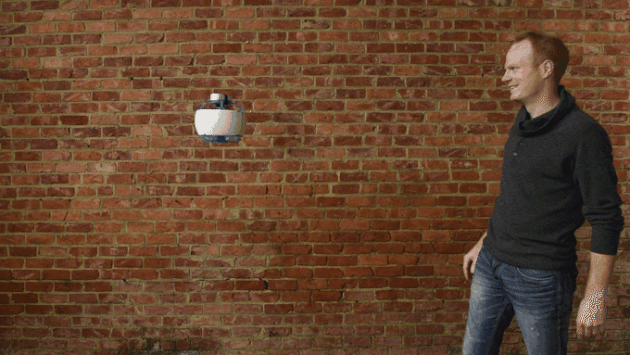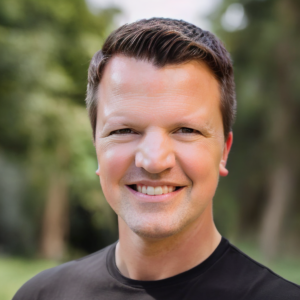How to Build Links in the Modern SEO Landscape
Linking building has been a dicey topic for marketers, especially when trying to ramp up SEO.
Should companies try to “do link building”?
Is all link building “black hat”?
Will we get penalized?
If links are still important, how do we do link building in a modern SEO world?
Google’s John Mueller has said (to no small amount of criticism and general eye-rolling from many SEOs) that you should avoid link-building. But SEO studies continued to show that the quantity of high-quality backlinks remains crucial to SEO and improved search rankings. Then, in March of 2016, Andrey Lipattsev (also of Google) identified links as one of the top two ranking factors.
So what’s a marketer to do?
In short, strive for quality. Natural, earned links are good SEO. Engagement should be the focus, with less time spent on the technical. After all, people want a connection, not a robot.

A Brief History of Link-Building
Once upon a time, search engines considered incoming links in direct correlation to the quality of a particular page or site. A page with a lot of links pointing to it would rise through the search engine results. Black-hat SEO seized the opportunity and pulled all kinds of tricks to create cheap, irrelevant SEO links.
That soon meant that crummy websites could rank well, and Google didn’t like that. Google has cracked down on spammy links by improving their algorithms to measure the quality of links in addition to counting them. Links that appear to have been purchased, or that come from a site with tons of other unrelated links, are quickly penalized.
Update: About two months after initially sharing this post, Google announced Penguin 4.0. Google will now continually analyze the quality of backlinks pointing to a site, in real time.
Authentic links from high-quality websites—from one content creator genuinely trying to enrich his audience—are, and probably always will be, good SEO signals. But those links are not “built” by following some kind of technical SEO blueprint. Those links are earned.
Qualities of Most-Linked Content
It’s easy to say that “good” content gets linked to, but what makes content “good” in terms of earning links? Content needs to be helpful, popular, and engaging to have any real SEO value, but there are a few other characteristics that correlate to more backlinks:
- Authoritative—Research-backed content correlates with significantly more links.
- Long—Content that is more than 1000 words gets more links than shorter content, and the longer, the better! Content that clocked in above 3000 words averages almost twice as many links as content that uses between 1000 and 2000 words.
- Unbiased—Content that is overly self-promotional destroys trust and any hopes its creator had of earning links to it.
- Well-designed—Content with images earn more links than content without, and well-designed, visually engaging content earns still more.
Part of designing good content means considering the type of content you’re producing as well, and some consistently correlate to more links as well:
- Listicles—List posts correlate to the highest number of links, over other content types.
- Videos—Blog posts and articles that include videos get three times as many links as text-only content.
Build Relationships, Not Links
Now that your content is engaging and worthy of sharing, you can start thinking about links, but we have to think about them differently than we have in the past. Links that improve SEO value aren’t “built,” because there’s no blueprint to follow and no one-size-fits-all solution. The focus can’t be on building links, but on building relationships.
Earning links happens most frequently in the wild when it is organic: authors, editors, or web masters come across content that they find to be particularly valuable for the content they are writing, so they link to it. Much has been written about “influencer marketing,” but the best way to encourage these kinds of high-quality, organic links is to make friends.
Because “influencers” know they have influence, and they know that marketers want a piece of them. Don’t be that marketer. This is about building relationships and partnerships. Learn from them, support them, get to know them. Stay in touch and share your content with them sparingly—only when you know it’s relevant and beneficial to them and their audiences.
It’s networking. And digital networking starts like traditional networking does: you go where your people are.
Building Relationships on Social Media Platforms
LinkedIn has become the social network for professionals, especially in industries like construction, education management, hospital and health care, and—most notably—IT. In addition to simply adding connections and maintaining an active profile, use LinkedIn to:
- Join groups your influencers own, manage, or are actively involved in, and add value to the conversations happening there.
- Leave thoughtful, conversation-starting comments on content they publish directly to LinkedIn.
Twitter is another great opportunity to connect with influencers. Some of the most “socially devoted” industries on Twitter include finance, telecom, and retail. A simple follow won’t get you noticed on Twitter, though:
- Share their content, and include “by @username” to improve the chances of the influencers seeing it.
- Retweet some—not all—of their tweets, preferably with a thoughtful comment within your 140 characters.
- Look for opportunities to connect on subjects outside of your industry. Check out the header image on their profile pages, or respond to off-topic tweets they push out.
Other industries lean toward other social channels based on each network’s demographic, so the influencer(s) you want to connect with may be more active on Instagram (retail, beauty, and fashion), Pinterest (food, retail, design), or a more niche social channel. Influencers are building audiences, though, so they want to be found on social media. Once you know whom you’re trying to meet, finding his or her favorite social channel isn’t difficult.
How to Win Friends and Influence People
Wherever you find them, keep a couple strategies in mind as you pursue influencers:
- Start with one or two, not a dozen. They’re people, and people know when they’re being used. Focus on meeting a couple influencers at a time.
- Be patient. Think of it as business networking, not link-building, because that’s really what it is. It takes time.
- Don’t neglect your own content. Make sure you’re still creating and curating the best content so when you finally do get someone’s attention, and he clicks over to your profile, he will see that there is value in the relationship for himself as well.
Once the relationship is established, you can ask for a link. When you get there, remember:
- The content better be killer. Don’t ask for an endorsement of your latest mediocre blog post. Publish a new resource, or update that evergreen piece that still gets all the metrics.
- Point out the value to the influencer. Why is the link valuable to the influencer? Why will her audience love it? How will it help him?
- Ask for input. If you’re publishing something new, ask the influencer to submit a quote or other contribution ahead of time. If it’s too late, ask for his or her expert opinion on a draft before the final is released.
Earning links is much more involved and takes much longer than old-fashioned link-building strategies, but the truth is that old-fashioned link-building strategies have negative SEO value today. If you want links that help your SEO, relationships are the only way to do it.
Sharing Links on Social Media is Not “Link Building”
So where and how do you create and/or earn strong links? One of the first venues most marketers turn to is social media, for obvious reasons: You can create your own links easily, and your audience can recreate and share them with just a click or tap!
But if something seems too good to be true, it usually is.
Google knows how easy it is to create and share links from social media channels, so those links get downgraded. Links on social media aren’t true “links.” They are social media mentions. And they don’t carry the same weight as a link from a reputable industry website or blog. They don’t have that kind of direct SEO value.
How Social Media and SEO Do Work Together
None of that means sharing links to your content on social media has zero SEO value. Getting visitors to your site can enhance your SEO, but indirectly.
First, content that is popular on social media may be seen by editors and web masters who will link to your content in the future. The popularity of your content on social media may give you an indication of what content that is well received – and what content is ignored.
The game changer content, of course, is the quality of the content at the end of your link.
Second (and also hinging on the quality of your content), is engagement metrics. Probably the most important reason to share your content on social is to wait for the response. Don’t share links and then move on to the next thing. Watch those engagement metrics. Are people interacting with it? Clicking through? Sharing it?
Those may not be numbers you report to the C-suite, but they are numbers you hand back to your marketing team. Post A got thousands of shares, but Post B was dead on arrival. Why? Perhaps one of the biggest benefits social media can offer is in helping your content team figure out what is resonating with your audience, what type of content they prefer, and what questions they need answered. That insight will drive great content creation and—in turn—SEO, engagement, lead nurturing, and sales.
Harness the Power of Link Earning
Earned links are the only links you want pointing to your website, and although it is a lot more work than throwing money at link dealers, it comes with the added benefit of built-in networking.
Start by making sure your content is up to snuff. Once you know you have something good, be strategic about social shares, make sure your analytics and goals are set up to help watch engagement metrics, and start building relationships with a few influencers in your field.
Google can confess the value of link building and still “advise” against it, because they don’t want black-hat SEOs trying to spam their algorithms with inauthentic signals. Links are not “dead,” but traditional link building definitely is. Viva link earning!
What's Next?
Profound Strategy is on a mission to help growth-minded marketers turn SEO back into a source of predictable, reliable, scalable business results.
Start winning in organic search and turn SEO into your most efficient marketing channel. Subscribe to updates and join the 6,000+ marketing executives and founders that are changing the way they do SEO:
And dig deeper with some of our best content, such as The CMO’s Guide to Modern SEO, Technical SEO: A Decision Maker’s Guide, and A Modern Framework for SEO Work that Matters.




